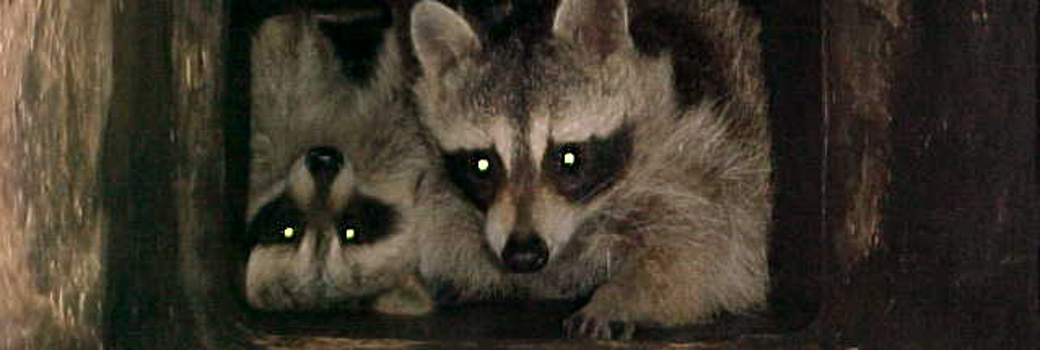- Annapolis Educational Article of the Month - About the raccoon
About the raccoon
About the raccoon
Raccoons are very familiar sight to most people in North America. They can be found almost everywhere, from the
center of big cities to the most empty wilderness. The main reason they cover such a wide range is very simple,
they will eat almost anything and all they need for a den is for it to be dry and warm in winter. Even though Annapolis raccoons
do not hibernate during really cold winters they sleep for days on end before hunger drives them out of their dens to
forage for food.

Raccoons are known for their features, there facial coloration looks like they are wearing a mask, which a lot of people
think is appropriate considering their behavior. There fur is a light grayish, mostly but it has a very dense underfur which
is excellent insulation against cold, their tail is ringed in light and dark fur. They also have very dexterous front paws with
long fingers that seem to be able to get into anything. In the natural world Maryland raccoons prefer to hunt in shallow water, their
preferred prey being frogs, crustaceans and anything else they find living in the water. That doesn't mean they won't eat land-based
creatures they have been known to eat mice and any insects they find. They are basically a real omnivore and a creature that accepts
every opportunity that comes its way.
When Annapolis raccoons breed the female looks for a den that is both dry and safe for the up to seven Cubs she is about to give birth to. Once
the cubs are born they will spend the first two months of their life in the den but after that the whole family will move out of the den
into her foraging range. Raccoons have a lifespan in the wild of two to three years in the wild though one captive Maryland raccoon lived almost 20
years and adults can weigh up to 23 pounds.
Most people would agree that Maryland raccoons are quite intelligent animals, they are very good problem solvers, they have been tested and they can
remember how they solved a problem three years after they did it the first time and are especially good when it comes to getting food, they
regularly open closed and sealed garbage cans to get at the contents. They are extremely adaptable, females with cubs in big cities have been
found to have home ranges of less than six city blocks whereas their wild cousins out on the prairies can have a range of twenty square miles.
To learn more about our services, visit the Annapolis wildlife removal home page.

